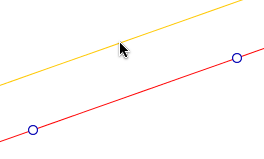| CaRMetal | |
|---|---|
| | |
 | |
| Original author | Eric Hakenholz |
| Developers | Eric Hakenholz, Patrice Debrabant, Pierre-Marc Mazat, Alain Busser |
| Initial release | October 28, 2006 |
| Stable release | 4.3 / September 11, 2020 |
| Repository | none |
| Written in | Java |
| Platform | Java |
| Type | Interactive geometry software |
| License | GNU General Public License |
| Website | carmetal |
CaRMetal is an interactive geometry program which inherited the C.a.R. engine. The software has been created by Eric Hakenholz, in Java. CaRMetal is free, under GNU GPL license. It keeps an amount of functionality of C.a.R. but uses a different graphical interface which purportedly eliminates some intermediate dialogs and provides direct access to numerous effects. Constructions are done using a main palette, which contains some useful construction shortcuts in addition to the standard compass and ruler tools. These include perpendicular bisector, circle through three points, circumcircular arc through three points, and conic section through five points. Also interesting are the loci, functions, parametric curves, and implicit plots. Element thickness, color, label, and other attributes (including the so-called magnetic property) can be set using a separate panel.
Contents
- Didactic interest
- Anticipation
- Amodality
- Transformations
- Assignments
- Macros
- Special features
- Workbooks
- Numeric display
- 3D
- Magnetism
- Network
- JavaScript inside CaRMetal
- Variables
- Input-Output
- Strings
- Loops
- JavaScript objects
- See also
- References
- External links
CaRMetal also supports a configurable restricted construction palette and has assignment capabilities, which use an apparently unique feature called Monkey. CaRMetal has a scripting language (JavaScript) which allows the user to build rather complex figures like fractals. CaRMetal has several locales including French, English, Spanish, German, Italian, Dutch, Portuguese and Arabic.




